Hello everyone and welcome back to my blog. Today, I would like to show you another antique garment in my collection, a beautifully beaded cape from around the 1900s. I bought this on the Swiss bidding platform ricardo.ch. I love this piece, it is the only one I can imagine wearing with a self-made dress. It is in good condition and would not be in contact with my skin, I can hopefully wear it without destroying it.
If you are interested in more pieces from my collection, here you go:
Now, let’s have a closer look on this wonderful cape from the 1900s.
Here it is, the cape in all it’s glory from the front and the back, outside and inside:
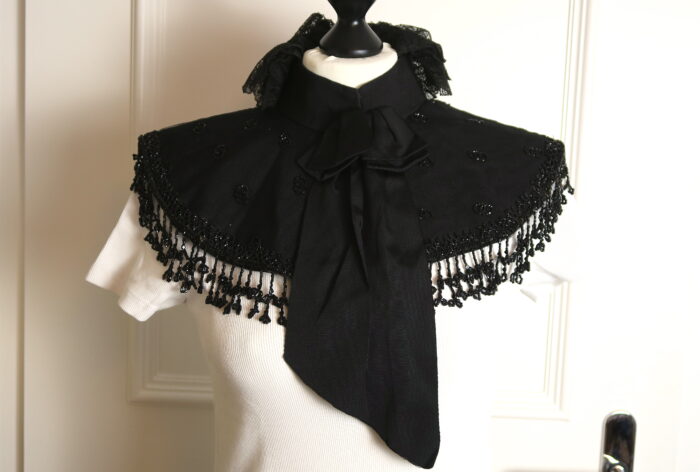
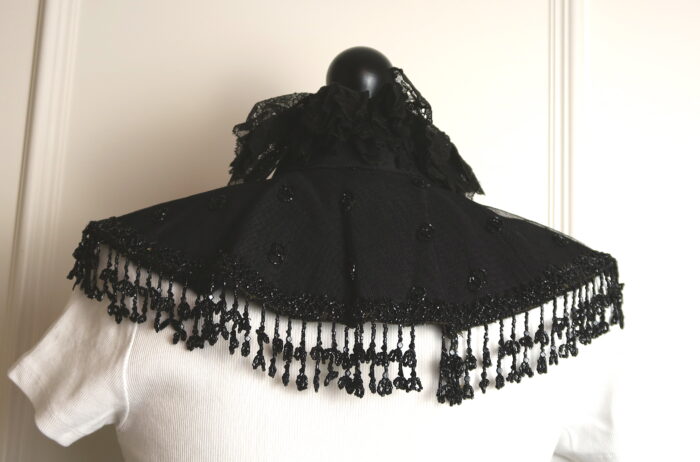
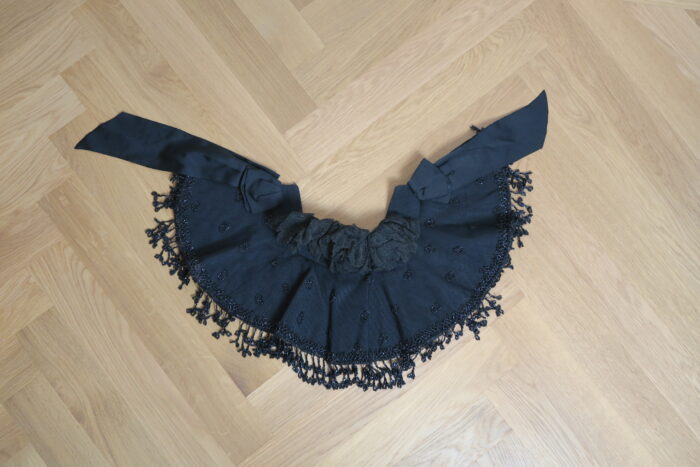
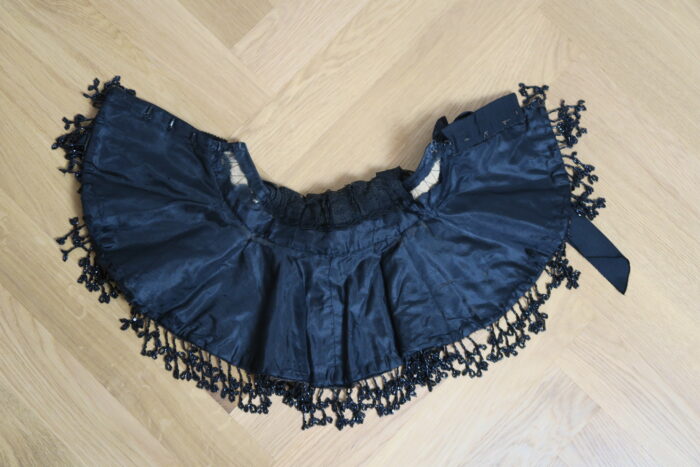
This cape has a total of 4 layers:
You will see details of the different layers in the detail shots below. The cape has a nice weight to it and feels very durable, even though it is quite delicate with all the bead tendrils. It is in very good condition.
The four layers are all pieced: The lining has one seam in the middle and is cut from two pieces. The black fabric layer is cut from four pieces, there are 3 visible seams. The black fabric layer also shows more piecing (picture below). The mesh was cut in three pieces, there is one seam in the back towards the shoulders and one seam towards the centre front on the left side:
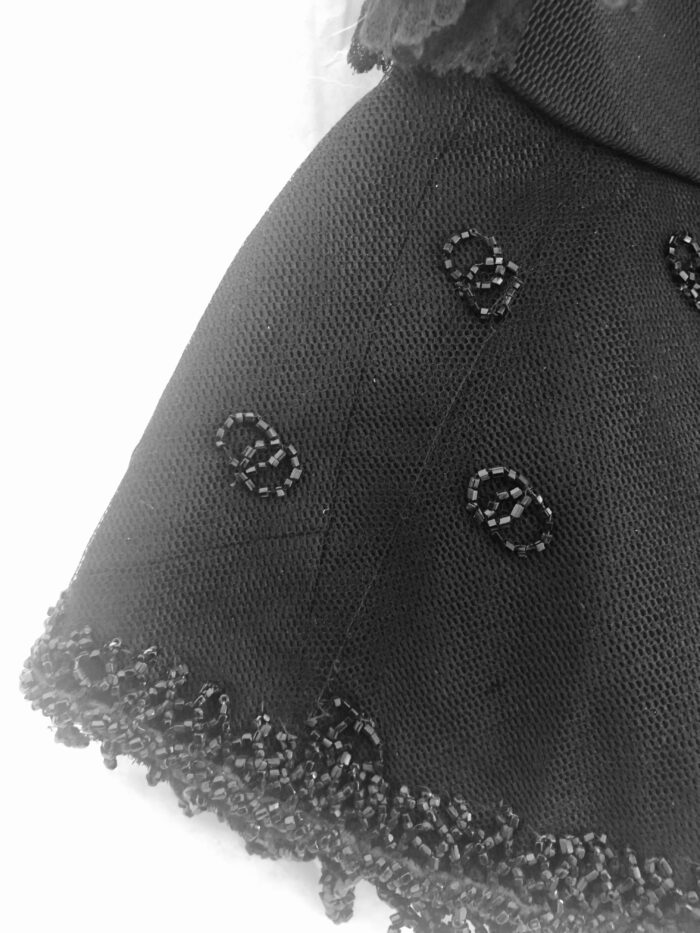
An elegant bow decorates the front of the cape:
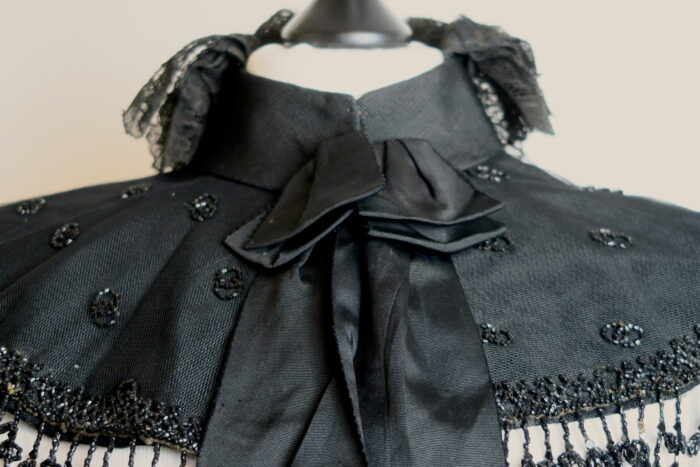
This big bow is formed by two bows on each side of the collar. The upper half was folded downwards and when closed, those two folded bows form one big bow:
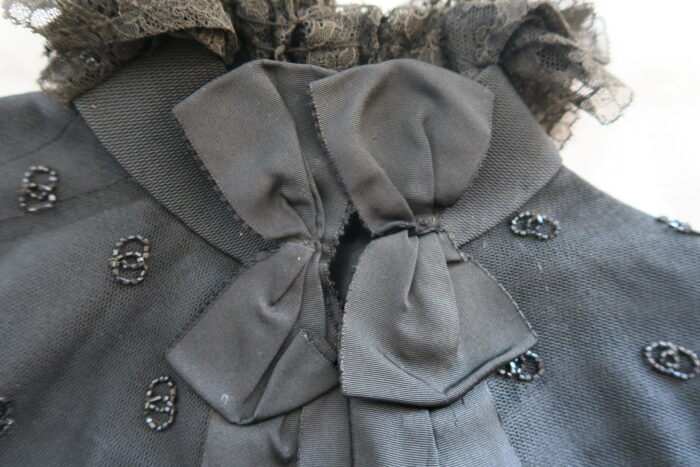
Lace decorates the backside of the collar. The lace was probably pitch black when the cape was made. The colour has now faded into a dark brown, especially the threads used to decorate the lace.

The lace around the collar looks layered, but it is actually just one layer, folded into several pleats. The pleats are handstitched down on the inside of the collar, where the large stitches and the thick thread would not be visible, keep the pleats in place:
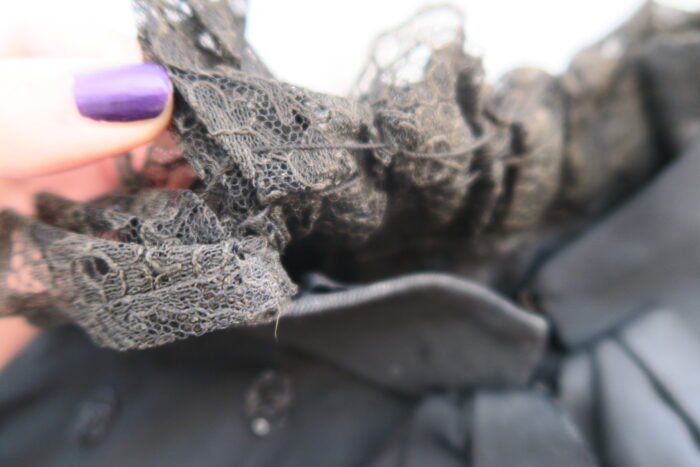
Two beaded circles build the pattern on the mesh layer. There is also a nice pattern of rhombuses around the hem as well as tendrils of beads. In some places, there are missing tendrils and beads, unfortunately, but most have survived the last 120 years.
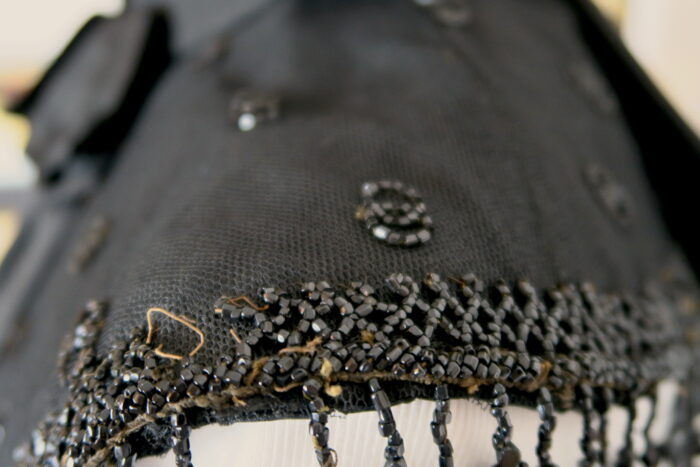
The beading around the hem was probably added last, as handstitches that are visible from the inside suggest:
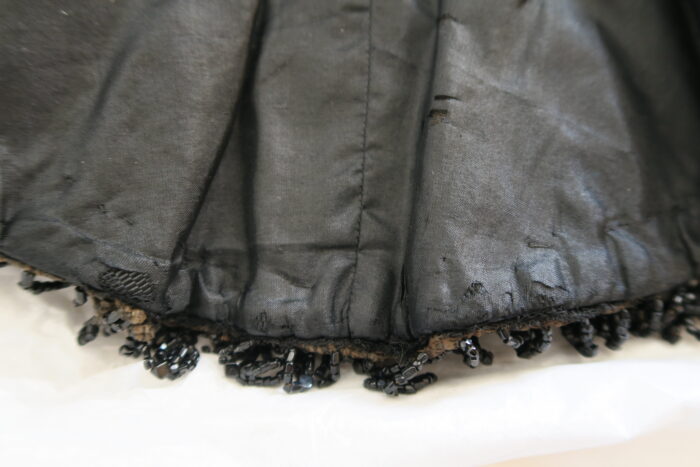
The thick strand of beads is attached to the mesh, the beaded rhombuses are sewed down by hand at the top through all fabric layers:
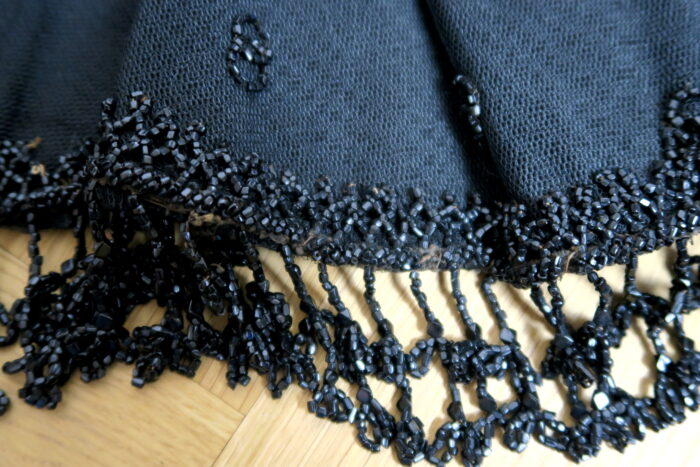
The tendrils look like branches with leaves.
The cape is fully lined:

Around the collar, the lining disintegrated, unfortunately. But this gives a nice view on the starched layer between lining and the black fabric.
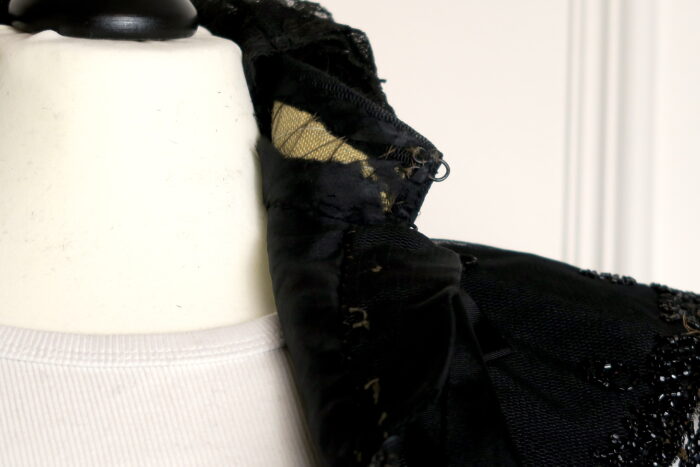
In some places, you also see the stiff layer used for the cape. It is a darker colour than the stiff layer used for the collar but seams to be the same material:
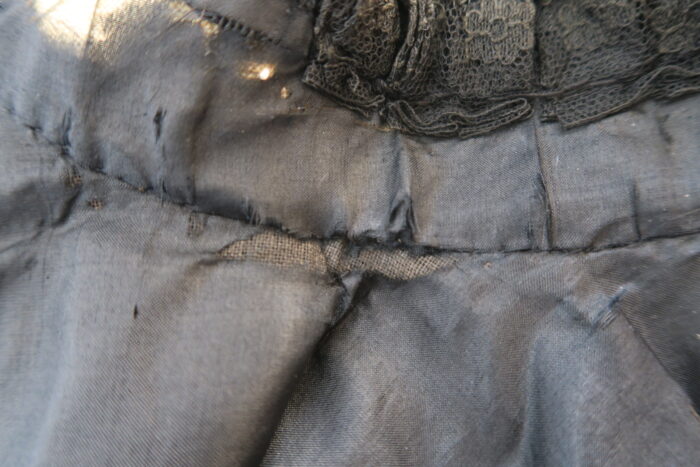
The cape closes with 5 hooks and eyes in the front. I believe they are the original ones. The eyes are sandwitched between the cape layer and the placket and they are in the same condition as the hooks.
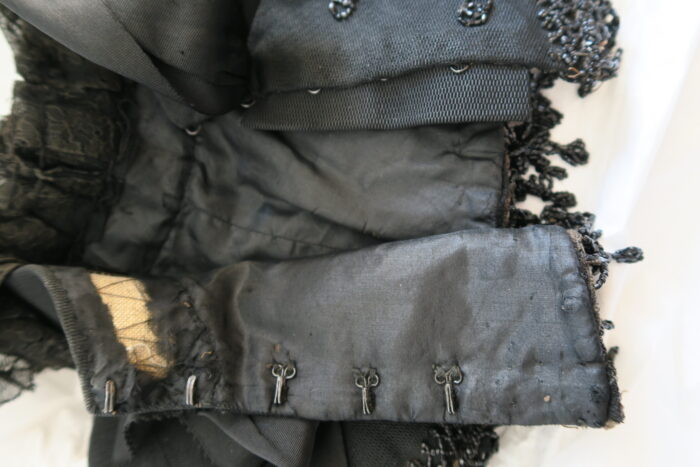
The hooks were sewn on individually, not all with the same thread as it was the case for the antique jacket. Here you also see the desintegrated lining. Beneath it you see the starched layer and the herringbone stitches that were used to sew the mesh and black fabric layer in place before adding the lining:
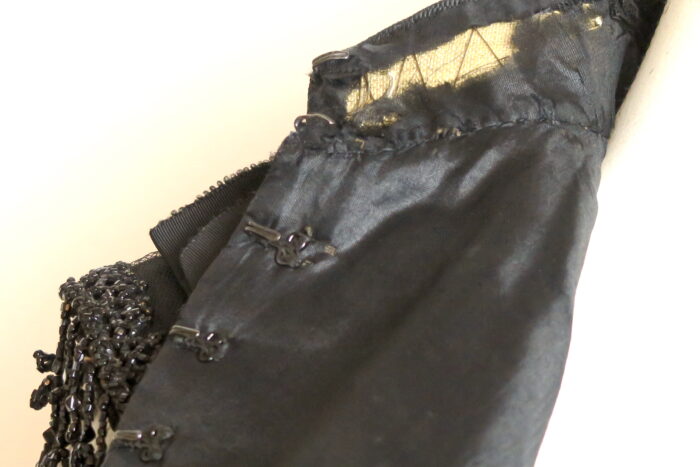
A closer look at the placket that is handstiched onto the lining. You can also see the stitches that keep the eyes in place. They were sewn onto the placket.
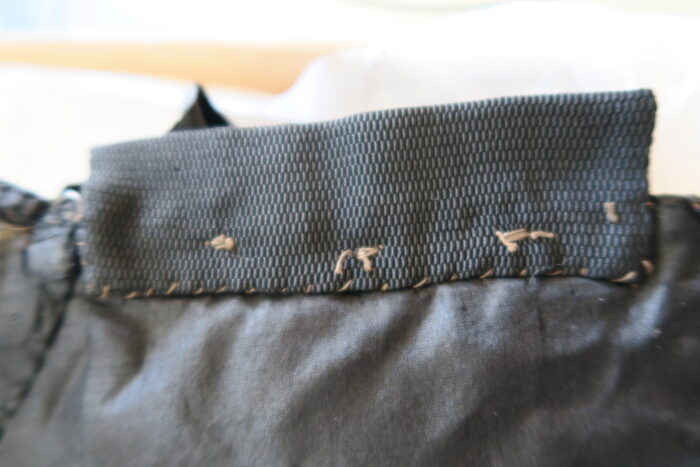
And that’s it. If you would like to see more details of this cape from the 1900s, let me know in the comments. I will also film a little video for Instagram, if you want to see it in a video, you find my instagram on the right side of my website. I hope you enjoyed this post and I wish you a good one!
Love,
Ella
Contact me over Instagram: